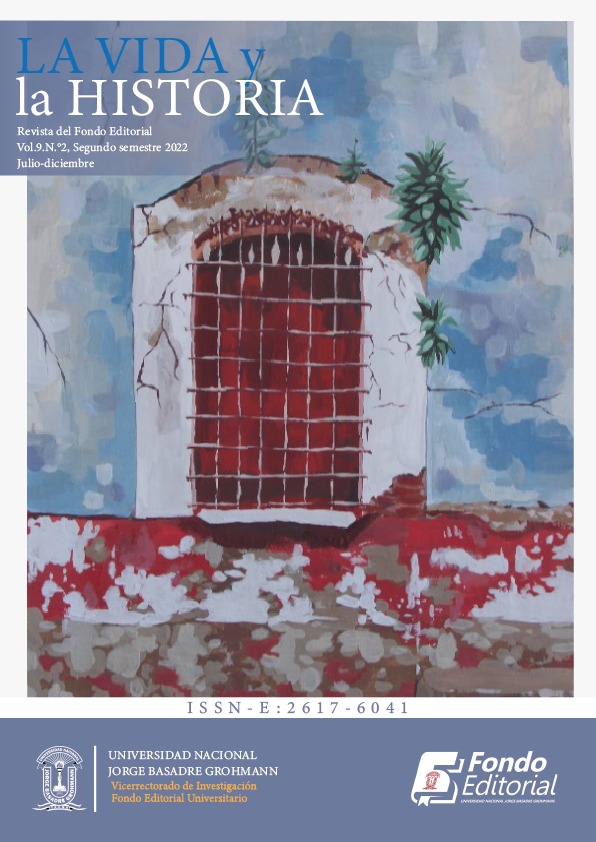THE INKA ARMY, an approximation
Main Article Content
Abstract
This article describes the inka army, through the analysis of weapons, tactical organization, and command; thus, the objective of finding interrelations between inka warfare, social organization, and power. So, this is how through an explanation about the use and importance of the armament, we go to determine the order of the tactical formations based on the society configuration in ayllus and their space ideal distribution, so we can finally interpret the leadership of this organization, so that way establish a tight relation with the power structure, not only about the warfare but also about the religion and the administration. This allow us to understand social tension and conflict for the power, that were produced into the inka society at the beginning and at the end of a conquest campaign, and approximated to the use of the inka’s llaqtas as military centers related to the panakas or linages and their importance inside the power and succession conflicts. This analysis allows us to rethink some premises of the actual historiography about a supposed decimal and dual organization of the army, nevertheless that both the military and social structure conditioned a unique command that inside the Andean world possibly constituted a unique and decisive advantage and characteristic of the inka army.
Downloads
Article Details
References
Betanzos, J. (2015 [1551]). Suma y Narración de los Incas. Fondo Editorial PUCP.
Bram, J. (1977). Análisis del Militarismo Incaico. Universidad Nacional Mayor de San Marcos.
Cabello, M.. (1951 [1586]. Miscelanea Antártica. Instituto de Etnología del la UNMSM.
Cieza, P. (1985 [1553]). Crónica del Perú Segunda Parte. Fondo Editorial PUCP.
D´Altroy, T. (2015). El Poder Provincial en el Imperio Inka. Instituto de Estudios Peruanos.
Espino, A. (2019). Plata y Sangre, La Conquista del Imperio Inca y las Guerras Civiles del Perú. Desperta Ferro.
Espinoza, W. (2003). Temas de Etnohistoria Boliviana. Producciones CIMA.
Guillen, E. (2005). Ensayos de Historia Andina. Universidad Alas Peruanas.
Garcilazo de la Vega, I. (1929 [1613]). Comentarios Reales. M.Aguilar Editor.
Gonzalez, D. (1989 [1608]). Vocabulario de la Legua General de Todo el Peru Llamada Lengua QQuichua o del Inca. Editorial de la Universidad Nacional Mayor de San Marcos.
Guaman Poma de Ayala, F. (2003 [1613?]). Las Ilustraciones de Guaman Poma. Editorial Commentarios.
Hurtado, I. (2017). Violencia en el Cusco Inca, según la crónica de Betanzos, una aproximación desde la teoría de René Girard (tesis de maestría). Universidad Católica San Pablo.
Molina, C. (1916 [1574]). Relación de las Fábulas y Ritos de los Incas y del la Conquista y Población del Perú.Imprenta y Librería San Martín y CA.
Murúa, M. (1946 [1590]). Historia del Orígen y Genealogía Real de los Reyes Incas del Perú Vol. II. Instituto Santo Toribio de Mogrovejo.
Pizarro, P. (2013 [1572]). Relación del Descubrimiento y Conquista de los Reinos del Perú. Fondo de Cultura Económica.
Restall, M. (2020). Los Siete Mitos de la Conquista Española. Editorial Planeta S.A.
Rowe, J. (2003). Los Incas del Cuzco, Siglos XVI-XVII-XVIII. Instituto Nacional de Cultura.
Santa Cruz Pacha Cuti, J. (2019 [ 1613]). Relación de Antiguedades deste Reyno del Pirv. Ediciones el Lector.
Sarmiento, P. (1999 [1572]). History of the Incas. Dover Publications, Inc.
Schjellerup, I. (2015). Incas y Españoles en la Conquista de los Chachapoyas. Fondo Editorial de la PUCP
Szemi´nski, J. (2016). De las Vidas del Inqa Manqu Qhapaq. Ediciones El Lector.
Valcárcel, L. (1964). Historia del Perú Antiguo, Tomos I-VI. Editorial Universitaria.
Vega, J. (1992). Los Incas Frente a España. Promoción Editorial Inca S.A.
